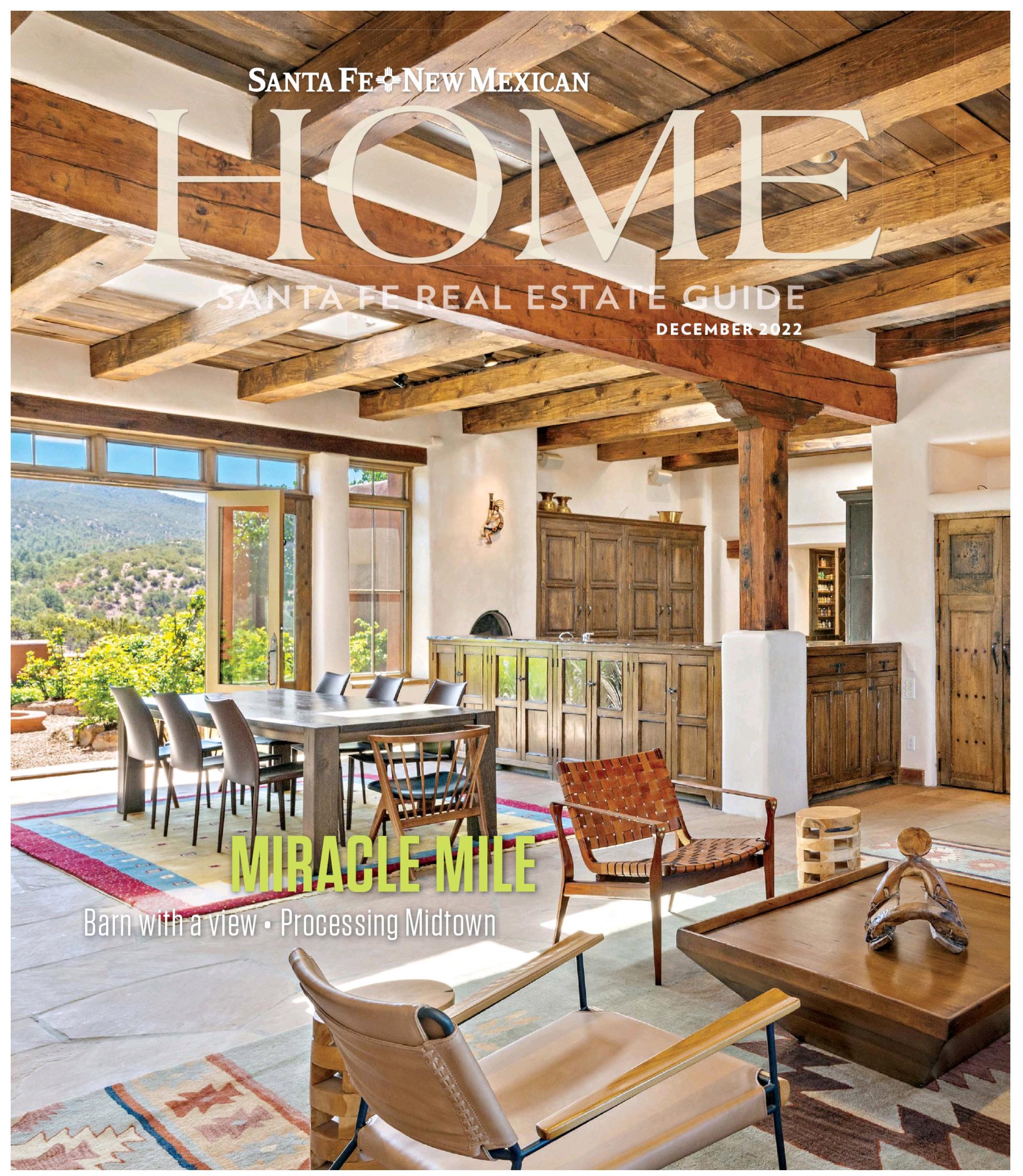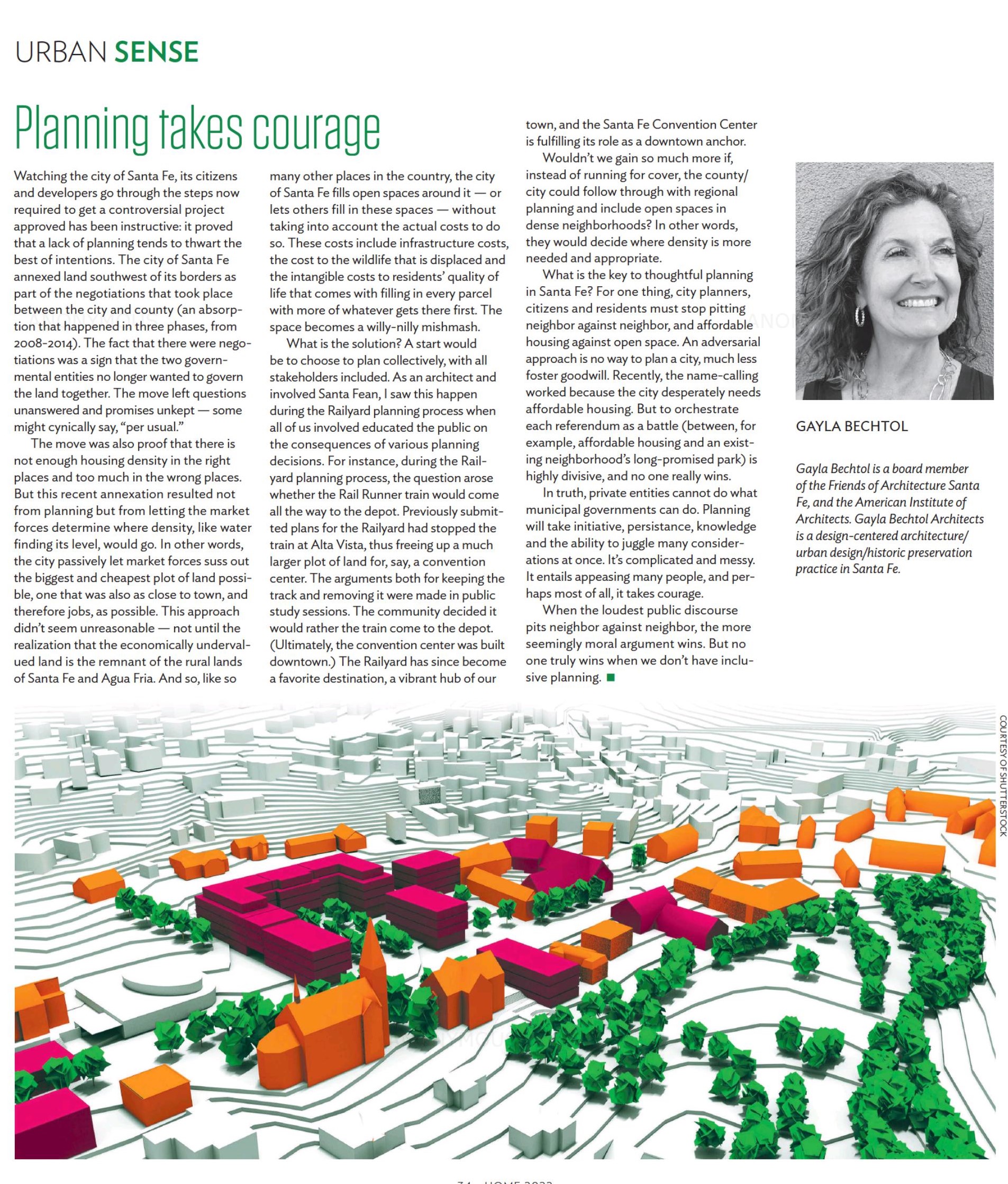In the December edition of The Santa Fe New Mexican’s Home Magazine, I discuss how the key to thoughtful planning in Santa Fe planning will take initiative, persistence, knowledge and the ability to juggle many considerations at once. Urban Sense.
Read the Article:
Watching the city of Santa Fe, its citizens and developers go through the steps now required to get a controversial project approved has been instructive: it proved that a lack of planning tends to thwart the best of intentions. The city of Santa Fe annexed land southwest of its borders as part of the negotiations that took place between the city and county (an absorption that happened in three phases, from 2008-2014). The fact that there were negotiations was a sign that the two govern-mental entities no longer wanted to govern the land together. The move left questions unanswered and promises unkept — some might cynically say, “per usual.”
The move was also proof that there is not enough housing density in the right places and too much in the wrong places. But this recent annexation resulted not from planning but from letting the market forces determine where density, like water finding its level, would go. In other words, the city passively let market forces suss out the biggest and cheapest plot of land possible, one that was also as close to town, and therefore jobs, as possible. This approach didn’t seem unreasonable — not until the realization that the economically undervalued land is the remnant of the rural lands of Santa Fe and Agua Fria. And so, like so many other places in the country, the city of Santa Fe fills open spaces around it — or lets others fill in these spaces — without taking into account the actual costs to do so. These costs include infrastructure costs, the cost to the wildlife that is displaced and the intangible costs to residents’ quality of life that comes with filling in every parcel with more of whatever gets there first. The space becomes a willy-nilly mishmash.
What is the solution? A start would be to choose to plan collectively, with all stakeholders included. As an architect and involved Santa Fean, I saw this happen during the Railyard planning process when all of us involved educated the public on the consequences of various planning decisions. For instance, during the Rail-yard planning process, the question arose whether the Rail Runner train would come all the way to the depot. Previously submit-ted plans for the Railyard had stopped the train at Alta Vista, thus freeing up a much larger plot of land for, say, a convention center. The arguments both for keeping the track and removing it were made in public study sessions. The community decided it would rather the train come to the depot. (Ultimately, the convention center was built downtown.) The Railyard has since become a favorite destination, a vibrant hub of our town, and the Santa Fe Convention Center is fulfilling its role as a downtown anchor.
Wouldn’t we gain so much more if, instead of running for cover, the county/city could follow through with regional planning and include open spaces in dense neighborhoods? In other words, they would decide where density is more needed and appropriate.
What is the key to thoughtful planning in Santa Fe? For one thing, city planners, citizens and residents must stop pitting neighbor against neighbor, and affordable housing against open space. An adversarial approach is no way to plan a city, much less foster goodwill. Recently, the name-calling worked because the city desperately needs affordable housing. But to orchestrate each referendum as a battle (between, for example, affordable housing and an exist-ing neighborhood’s long-promised park) is highly divisive, and no one really wins.
In truth, private entities cannot do what municipal governments can do. Planning will take initiative, persistence, knowledge and the ability to juggle many considerations at once. It’s complicated and messy. It entails appeasing many people, and per-haps most of all, it takes courage.
When the loudest public discourse pits neighbor against neighbor, the more seemingly moral argument wins. But no one truly wins when we don’t have inclusive planning.
Gayla Bechtol received her architecture degrees from Harvard University and from the University of Southern California. Gayla Bechtol Architects is a design-centered architecture/urban design/historic preservation practice that has created designs for homes, institutions, and urban spaces for nearly 30 years. Bechtol practiced deep democracy while leading the citizens of Santa Fe to the award-winning Santa Fe Railyard. She is a board member of Friends of Architecture Santa Fe.


